This post originally did not offer repeats for the design, they are presented here in a 2024 review of content.
Thread lace has also been called punch lace over the years. The “lace holes” are formed by knitting a fine thread with a significantly thicker yarn as the “second color”. When the fine yarn knits (B), a larger stitch in it alone is formed, with the thicker yarn floating behind it. The thicker yarn goes in Brother’s A feeder, the thinner in B. In FI patterning, the unpunched holes/ blank squares/ no pixels are knit in the yarn in feeder A, and punched holes/ black squares/ pixels are knit in B feeder yarn. In thread lace both yarns knit the unselected needles, corresponding to blanks in the card or blank squares/ unmarked pixels. The tension may need to be adjusted due to this fact.
Test swatches for tolerance to pressing/ steaming to make certain the final garment will bear blocking and cleaning. I had a sweater front finished using an industry “clear” thread, thankfully tried to iron it before finishing starting other pieces, and discovered a lovely melting quality to the clear “thread”. In theory, clear serger thread should be safe to use, there are 2 easily available manufacturers. YLI brand (nylon) is stocked at most chain stores that carry sewing supplies. One “light / clear” is “whiter” than others; there is a “smoke” version as well, sold on cones. Both produce a bit of a sheen on the surface of the knit fabric. Sulky (polyester) clear is sold on spools and is superior for sewing pieces together, zippers, etc with no “sharp” when the cut ends poking at the skin, but at a different price point and quantity.
This was my garment’s test swatch, the black is a wool rayon yarn.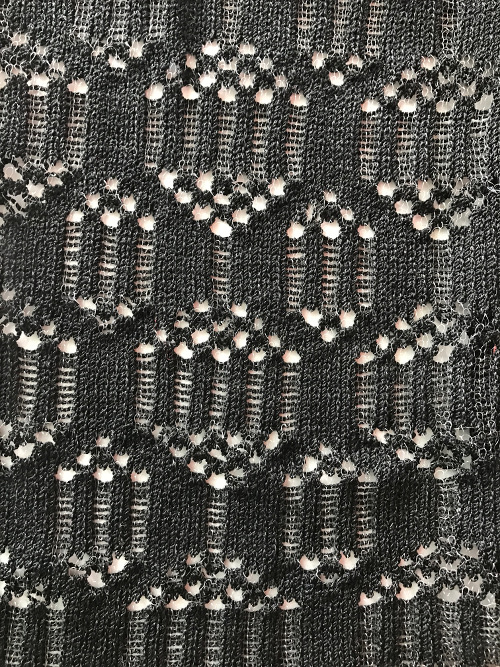 punchcard repeat:
punchcard repeat: the associated 24X72 png
the associated 24X72 png![]()
 The fabric is much quicker to produce than traditional transfer lace.
The fabric is much quicker to produce than traditional transfer lace.
Cards can easily be drawn by filling in solid shapes over a mesh ie the repeat seen in the 1X1 card.
Double length may produce an interesting fabric as well.
End needle selection needs to be canceled. If end needles are selected because of the pattern repeat, push those needles back to the B position manually before knitting the next row. The latter step ensures that both yarns will knit together. On electronic models one can program the number of repeats planned and add blank rows on either side of the repeat prior to downloading for all knit borders on both sides of the piece.
Either side may be used as the “public side”, depending on personal preference. The thread lace option is also available in the 260 bulky machines. Here a very thin acrylic was used as the “thin” at the start of the swatch, monofilament for the remainder (bulky KM)  punchcard:
punchcard: 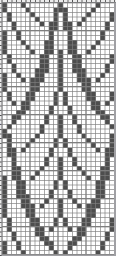 24X54 png
24X54 png ![]()
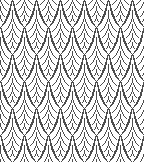 A floral repeat card
A floral repeat card
 the 24X80 png
the 24X80 png ![]()
 The thin rayon is noticed especially over a dark ground in the finished piece, not as much as in this view. The fabric will lie flat when pressed, here it was steamed lightly
The thin rayon is noticed especially over a dark ground in the finished piece, not as much as in this view. The fabric will lie flat when pressed, here it was steamed lightly 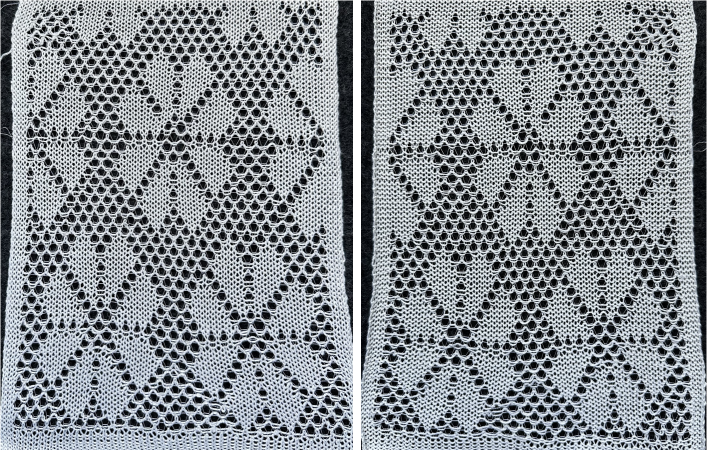 A closer look
A closer look 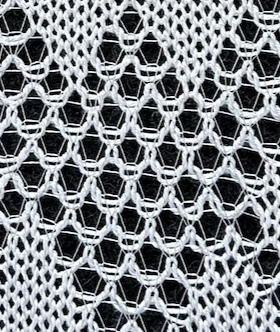 The old sample, knit with monofilament as color 2, the repeat is suitable only for an electronic, even if only half is used
The old sample, knit with monofilament as color 2, the repeat is suitable only for an electronic, even if only half is used  Uncertain as to the repeat in the present time, here it is reconstructed to a 52X48 png.
Uncertain as to the repeat in the present time, here it is reconstructed to a 52X48 png. ![]()
 A new proof of concept swatch, knit in rayon yarn and a shiny sewing cotton
A new proof of concept swatch, knit in rayon yarn and a shiny sewing cotton Taking it to a garment (standard KM): color 1 = wool/rayon blend, color 2 = sewing thread. Note the difference in color where there is no needle selection for pattern, and how one color is more prominent on one side than the other. Sometimes the latter may be used to advantage when the goal is a plaited fabric, but no plaiting feeder is available. Simply program in a blank row, and position threads using the thread lace setting to produce the knit.
Taking it to a garment (standard KM): color 1 = wool/rayon blend, color 2 = sewing thread. Note the difference in color where there is no needle selection for pattern, and how one color is more prominent on one side than the other. Sometimes the latter may be used to advantage when the goal is a plaited fabric, but no plaiting feeder is available. Simply program in a blank row, and position threads using the thread lace setting to produce the knit.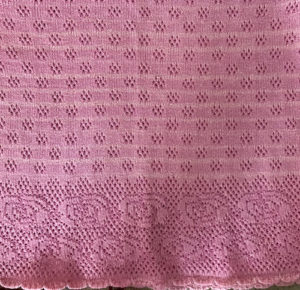
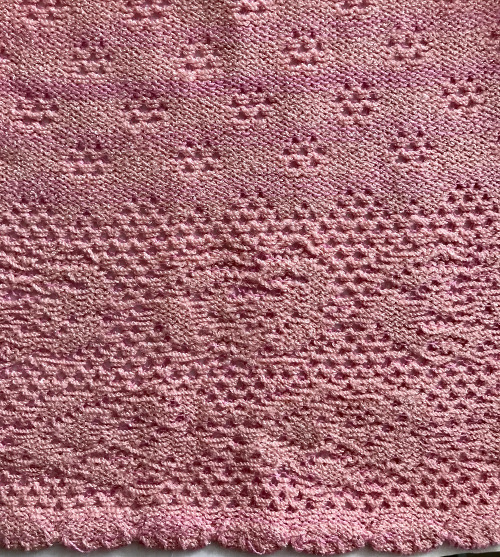 The card:
The card: 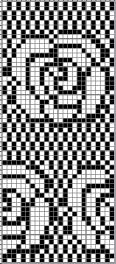 the 24X56 png
the 24X56 png ![]()
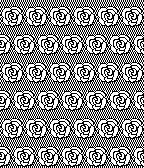 some needle selection was eliminated in the knit piece to allow for a transition to the new, smaller design repeat
some needle selection was eliminated in the knit piece to allow for a transition to the new, smaller design repeat  The chart for the small repeat used in the upper body
The chart for the small repeat used in the upper body 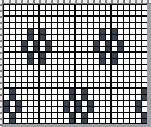 A larger, electronic repeat found on an ancient 560 mylar of mine to play with
A larger, electronic repeat found on an ancient 560 mylar of mine to play with
32X40 ![]()
 32X80
32X80
![]()
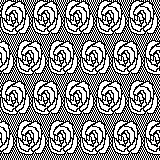 64X40
64X40 ![]()
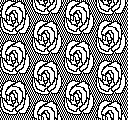 I knit on a 910 electronic, with no option for such fabrics built into the knit carriage. I was able, however, to modify and use my punchcard carriage with the intent of producing yet another “unconventional”, ribbed fabric.
I knit on a 910 electronic, with no option for such fabrics built into the knit carriage. I was able, however, to modify and use my punchcard carriage with the intent of producing yet another “unconventional”, ribbed fabric.  Added tips: the tension dial usually ends to be a bit tighter than stocking stitch. The fabric produced is also thinner and shorter than stocking stitch, as is fair isle. The finished fabric tends to elongate with rest after blocking.
Added tips: the tension dial usually ends to be a bit tighter than stocking stitch. The fabric produced is also thinner and shorter than stocking stitch, as is fair isle. The finished fabric tends to elongate with rest after blocking.
The setting may be used instead of plating. A plated, solid fabric is produced by non-selected needles. The thread lace thread tends to appear on the knit side, as opposed to the plating yarn, which appears on the purl side. The color mix may appear less even than in traditional plating. Simply lock the card or needle selection on an all “blank” row.
If the “lace” thread is too thick or too contrasting in color, the eyelet pattern may be lost.
Simple geometric shapes are best.
Some knit weaving patterns may also work well.
In terms of altering the repeats using the buttons on the electronic models, double length or sometimes double wide as well as vertical mirroring may produce interesting results.
Sewing or serger threads may serve as the thin yarn and match yarn color well if that is desired. A sort of “sock” may help with more even feeding, the mesh used here was from a florist, netting from supermarket products ie unusual fruit can come in handy as well  On the select/memorize row both yarns are fed into the same feeder (A) as the thick yarn, and the “lace” yarn is then removed and placed in the second feeder (B).
On the select/memorize row both yarns are fed into the same feeder (A) as the thick yarn, and the “lace” yarn is then removed and placed in the second feeder (B).
An option for drawing your own patterns: shapes can be superimposed on mesh designs as described in “filet crochet” posts, with no elongation of the motif.
A sample of a floral on a transfer lace mesh, one of my one-off scarves from eons ago  Punchcard machine owners may use tape over sections of card number 2, or card 1 which in turn gives the option of testing the design elongation X 2 for both eyelets and motif as well. The tape may be moved to suit, and once the pattern is satisfactory, the final pattern design card may be punched.
Punchcard machine owners may use tape over sections of card number 2, or card 1 which in turn gives the option of testing the design elongation X 2 for both eyelets and motif as well. The tape may be moved to suit, and once the pattern is satisfactory, the final pattern design card may be punched.
Both Brother and Studio offer the cards in their standard punchcard assortment with the purchase of respective machines. 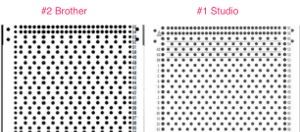 A later blog post on the topic with additional information on yarn placement, settings, and more: 2019/02/25/tuck-stitch-meets-thread-lace-repeats-and-vice-versa/
A later blog post on the topic with additional information on yarn placement, settings, and more: 2019/02/25/tuck-stitch-meets-thread-lace-repeats-and-vice-versa/